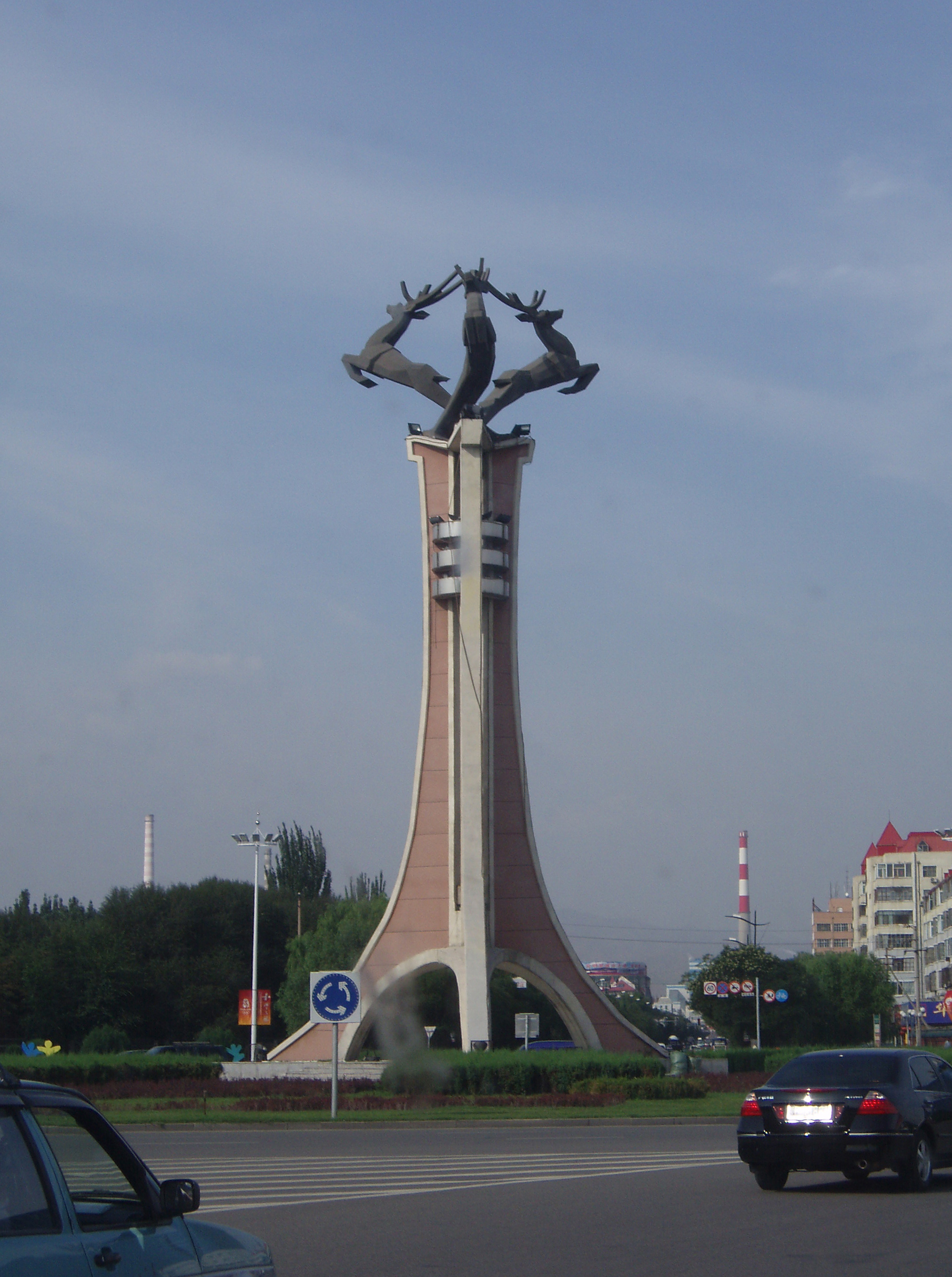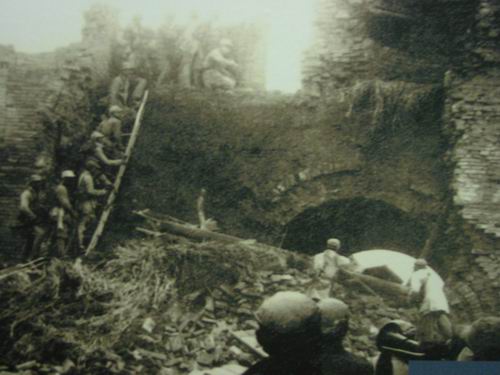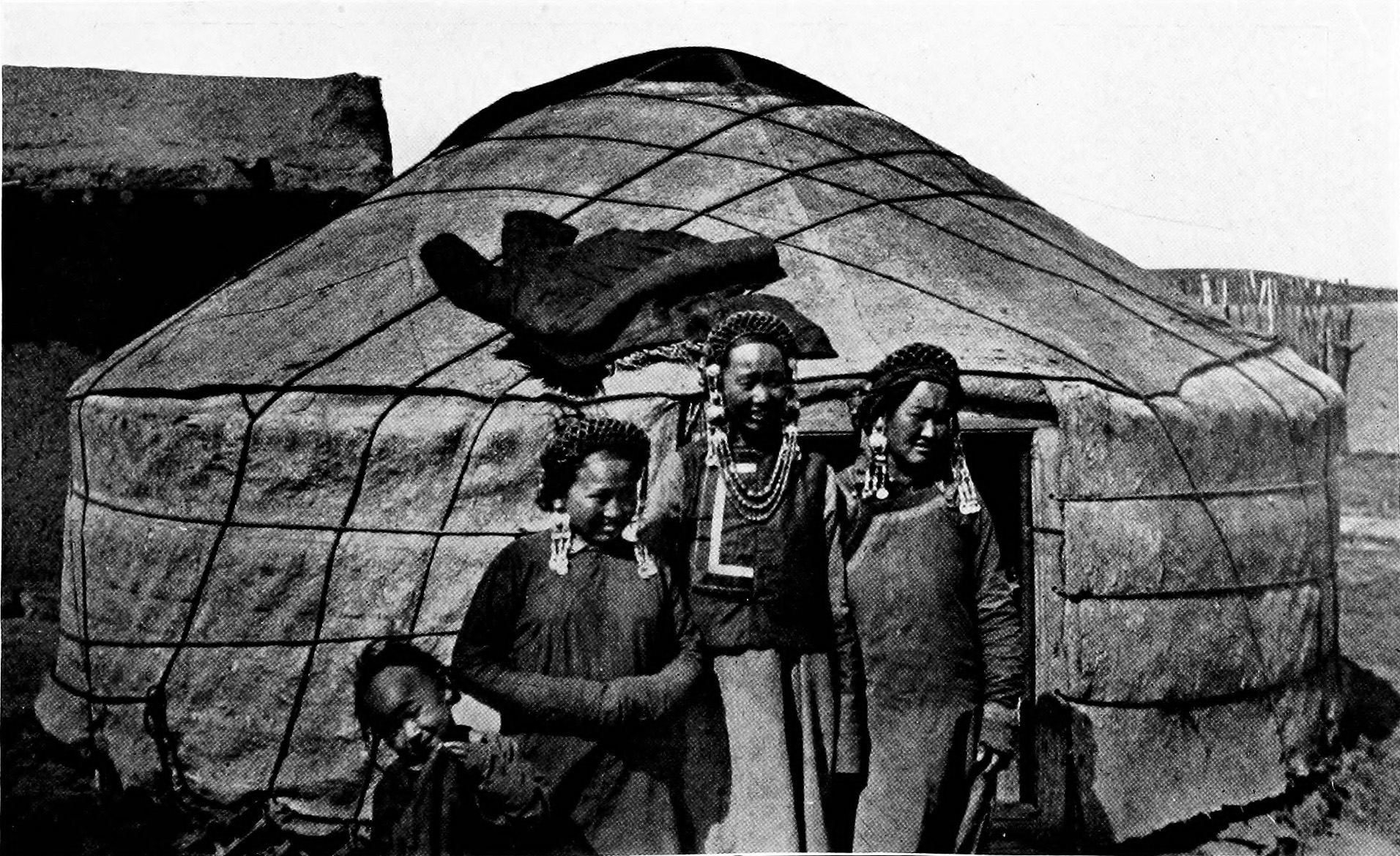|
Bayan Nur
Bayannur or Bayannao'er ( zh, c=巴彦淖尔市, p=bāyànnàoěr; ''Bayannaɣur qota'', Mongolian Cyrillic Баяннуур хот) is a prefecture-level city in western Inner Mongolia, People's Republic of China. Until 1 December 2003, the area was called Bayannur League. Bayannur has an administrative area of . The name of the city in Mongolian means "Rich Lake". As of the 2010 census, the population of Bayannur was 1,669,915; while the city proper, Linhe District, had 520,300 inhabitants. The city is served by the Bayannur Tianjitai Airport. History The Zhao dynasty (403 BCE–222 BCE) controlled an area including modern-day Bayannur, while the Western Han dynasty (206 BCE–24 CE) established a hierarchical Chinese administrative structure. The Qing dynasty (1644–1912) designated this area as part of "Inner Mongolia", but after its overthrow by the Republic of China (1912–1949), Bayannur was assigned to Suiyuan Province. Because of Mongol-Chinese cooperation wit ... [...More Info...] [...Related Items...] OR: [Wikipedia] [Google] [Baidu] |
Prefecture-level City
A prefecture-level city () or prefectural city is an administrative division of the China, People's Republic of China (PRC), ranking below a province of China, province and above a Counties of the People's Republic of China, county in China's administrative structure. Details During the Republican era, many of China's prefectural cities were designated as Counties of Taiwan, counties as the country's second level division below a province. From 1949 to 1983, the official term was a province-administrated city (Chinese: 省辖市). Prefectural level cities form the second level of the administrative structure (alongside prefecture of China, prefectures, Leagues of China, leagues and autonomous prefectures). Administrative chiefs (mayors) of prefectural level cities generally have the same rank as a division chief () of a national ministry. Since the 1980s, most former prefectures have been renamed into prefecture-level cities. A prefectural level city is a "city" () and "p ... [...More Info...] [...Related Items...] OR: [Wikipedia] [Google] [Baidu] |
Zhao (state)
Zhao () was one of the seven major State (Ancient China), states during the Warring States period of ancient China. It emerged from the Partition of Jin, tripartite division of Jin, along with Han (Warring States), Han and Wei (state), Wei, in the 5th century BC. Zhao gained considerable strength from the military reforms initiated during the reign of King Wuling of Zhao, King Wuling, but suffered a crushing defeat at the hands of Qin (state), Qin at the Battle of Changping. Its territory included areas in the modern provinces of Inner Mongolia, Hebei, Shanxi and Shaanxi. It bordered the states of Qin, Wei, and Yan (state), Yan, as well as various nomadic peoples including the Donghu people, Hu and Xiongnu. Its capital was Handan, in modern Hebei province. Zhao was home to the Chinese Legalism, administrative philosopher Shen Dao, Confucian Xun Kuang, and Gongsun Long, who is affiliated to the school of names. Origins and ascendancy The Zhao (surname), Zhao clan within Jin ( ... [...More Info...] [...Related Items...] OR: [Wikipedia] [Google] [Baidu] |
Köppen Climate Classification
The Köppen climate classification divides Earth climates into five main climate groups, with each group being divided based on patterns of seasonal precipitation and temperature. The five main groups are ''A'' (tropical), ''B'' (arid), ''C'' (temperate), ''D'' (continental), and ''E'' (polar). Each group and subgroup is represented by a letter. All climates are assigned a main group (the first letter). All climates except for those in the ''E'' group are assigned a seasonal precipitation subgroup (the second letter). For example, ''Af'' indicates a tropical rainforest climate. The system assigns a temperature subgroup for all groups other than those in the ''A'' group, indicated by the third letter for climates in ''B'', ''C'', ''D'', and the second letter for climates in ''E''. Other examples include: ''Cfb'' indicating an oceanic climate with warm summers as indicated by the ending ''b.'', while ''Dwb'' indicates a semi-Monsoon continental climate, monsoonal continental climate ... [...More Info...] [...Related Items...] OR: [Wikipedia] [Google] [Baidu] |
Desert Climate
The desert climate or arid climate (in the Köppen climate classification ''BWh'' and ''BWk'') is a dry climate sub-type in which there is a severe excess of evaporation over precipitation. The typically bald, rocky, or sandy surfaces in desert climates are dry and hold little moisture, quickly evaporating the already little rainfall they receive. Covering 14.2% of Earth's land area, hot deserts are the second-most common type of climate on Earth after the Polar climate. There are two variations of a desert climate according to the Köppen climate classification: a hot desert climate (''BWh''), and a cold desert climate (''BWk''). To delineate "hot desert climates" from "cold desert climates", a mean annual temperature of is used as an isotherm so that a location with a ''BW'' type climate with the appropriate temperature above this isotherm is classified as "hot arid subtype" (''BWh''), and a location with the appropriate temperature below the isotherm is classified as "cold a ... [...More Info...] [...Related Items...] OR: [Wikipedia] [Google] [Baidu] |
Ordos City
Ordos, also known as Ih Ju, is one of the twelve List of administrative divisions of Inner Mongolia, major subdivisions of Inner Mongolia, China. It lies within the Ordos Plateau of the Yellow River. Although mainly rural, Ordos is administered as a prefecture-level city. Its population was 2,153,638 as of the 2020 census, and its built-up (or metro) area made up of Ejin Horo Banner and Kangbashi District was home to 366,779 inhabitants, as Dongsheng District (574,442 inhabitants) is not a conurbation yet. Ordos is known for its recently undertaken large scale government projects including most prominently the new Kangbashi District, an urban district planned as a massive civic mall with abundant monuments, cultural institutions and other showpiece architecture. It was the venue for the Miss World 2012, 2012 Miss World Final. When it was newly built, the streets of the new Kangbashi district did not have much activity, and the district was frequently described as a "Underoccupi ... [...More Info...] [...Related Items...] OR: [Wikipedia] [Google] [Baidu] |
Alxa League
Alxa League or Alashan League ( zh, c=阿拉善盟, p=Ālāshàn Méng; , Mongolian Cyrillic: Алшаа аймаг) is one of 12 prefecture level divisions and 3 extant leagues of Inner Mongolia. The league borders Mongolia to the north, Bayan Nur to the northeast, Wuhai and Ordos to the east, Ningxia to the southeast, and Gansu to the south and west. The capital is Bayanhot town ( zh, c=巴彦浩特镇), formerly known as Dingyuanying ( zh, labels=no, c=定远营镇) or Wang Ye Fu, in the aimag's Left Banner. The Mongolian variety spoken in this area is the Alasha dialect. Demographics In the 2020 census, there were 262,361 inhabitants. Alxa is the least populated region of Inner Mongolia Autonomous Region. A number of residents have been relocated from the growing Tengger Desert.Haner, Josh, et al. (24 October 2016)Living in China's Expanding Deserts ''The New York Times'' Economy Since 2010, Alxa League has frequently appeared as one of the most prosperous p ... [...More Info...] [...Related Items...] OR: [Wikipedia] [Google] [Baidu] |
Baotou
Baotou; is the largest city by urban population in Inner Mongolia, China. Governed as a prefecture-level city, as of the 2020 census, its built-up (''or metro'') area made up of its 5 urban districts is home to 2,261,089 people with a total population of 2,709,378 accounting for counties under its jurisdiction. The city's namesake, literally translated to "place with deer", is of Mongolic origin or "Lucheng" ( zh, c=鹿城 , p=Lùchéng), meaning "City of Deer". Alternatively Baotou is known as the "City of Steel in Gobi" ( zh, labels=no, s=草原钢城 , p=Cǎoyuán Gāngchéng). Steel was a major industry in the city. Today, Baotou refines over half of the rare-earth minerals produced in the world. This has led to environmental contamination near the industrial sites. History Ancient times The area now known as Baotou was inhabited by nomads, some of whose descendants would later be categorized as Mongols. Near the end of the Han dynasty (206 BC–220 AD), Lü Bu, a partic ... [...More Info...] [...Related Items...] OR: [Wikipedia] [Google] [Baidu] |
Han Chinese
The Han Chinese, alternatively the Han people, are an East Asian people, East Asian ethnic group native to Greater China. With a global population of over 1.4 billion, the Han Chinese are the list of contemporary ethnic groups, world's largest ethnic group, making up about 17.5% of the world population. The Han Chinese represent 91.11% of the population in China and 97% of the population in Taiwan. Han Chinese are also a significant Overseas Chinese, diasporic group in Southeast Asian countries such as Thailand, Malaysia, and Indonesia. In Singapore, people of Han Chinese or Chinese descent make up around 75% of the country's population. The Han Chinese have exerted a primary formative influence in the development and growth of Chinese civilization. Originating from Zhongyuan, the Han Chinese trace their ancestry to the Huaxia people, a confederation of agricultural tribes that lived along the middle and lower reaches of the Yellow River in the north central plains of Chin ... [...More Info...] [...Related Items...] OR: [Wikipedia] [Google] [Baidu] |
Chinese Civil War
The Chinese Civil War was fought between the Kuomintang-led Nationalist government, government of the Republic of China (1912–1949), Republic of China and the forces of the Chinese Communist Party (CCP). Armed conflict continued intermittently from 1 August 1927 until Communist victory resulted in their total control over mainland China on 7 December 1949. The war is generally divided into two phases with an interlude: from August 1927 to 1937, the First United Front alliance of the KMT and CCP collapsed during the Northern Expedition, and the Nationalists controlled most of China. From 1937 to 1945, hostilities were mostly put on hold as the Second United Front fought the Second Sino-Japanese War, Japanese invasion of China with eventual help from the Allies of World War II. However, armed clashes between the groups remained common. Exacerbating the divisions within China further was the formation of the Wang Jingwei regime, a Japan-sponsored puppet government led by Wang ... [...More Info...] [...Related Items...] OR: [Wikipedia] [Google] [Baidu] |
Communist Party Of China
The Communist Party of China (CPC), also translated into English as Chinese Communist Party (CCP), is the founding and One-party state, sole ruling party of the People's Republic of China (PRC). Founded in 1921, the CCP emerged victorious in the Chinese Civil War against the Kuomintang and Proclamation of the People's Republic of China, proclaimed the establishment of the PRC under the leadership of Mao Zedong in October 1949. Since then, the CCP has governed China and has had sole control over the People's Liberation Army (PLA). , the CCP has more than 99 million members, making it the List of largest political parties, second largest political party by membership in the world. In 1921, Chen Duxiu and Li Dazhao led the founding of the CCP with the help of the Far Eastern Bureau of the Communist Party of the Soviet Union, Russian Communist Party (Bolsheviks) and Far Eastern Bureau of the Communist International. Although the CCP aligned with the Kuomintang (KMT) during its initia ... [...More Info...] [...Related Items...] OR: [Wikipedia] [Google] [Baidu] |
Mongols In China
Mongols in China, also known as Mongolian Chinese or Chinese Mongols, are ethnic Mongols who live in China. They are one of the List of ethnic groups in China#Ethnic groups recognized by the People's Republic of China, 56 ethnic groups recognized by the Chinese government. As of 2020, there are 6,290,204 Mongols in China, a 0.45% increase from the 2010 national census. Most of them live in Inner Mongolia, Northeast China, Xinjiang and Qinghai. The Mongol population in China is nearly twice as much as that of the sovereign state of Mongolia. Distribution The Mongols in China are divided between autonomous regions and provinces as follows: * 68.72%: Inner Mongolia Autonomous Region * 11.52%: Liaoning Province * 2.96%: Jilin Province * 2.92%: Hebei Province * 2.58%: Xinjiang Uyghur Autonomous Region * 2.43%: Heilongjiang Province * 1.48%: Qinghai Province * 1.41%: Henan Province * 5.98%: Rest of PRC Besides the Inner Mongolia autonomous region, there are other Mongol autonomo ... [...More Info...] [...Related Items...] OR: [Wikipedia] [Google] [Baidu] |
Suiyuan Province
Suiyuan () was a historical province of China. Suiyuan's capital was Guisui (now Hohhot). The abbreviation was (pinyin: ). The area Suiyuan covered is approximated today by the prefecture-level cities of Hohhot, Baotou, Wuhai, Ordos, Bayan Nur, and parts of Ulanqab, all today part of Inner Mongolia Autonomous Region. Suiyuan was named after a district in the capital established in the Qing Dynasty. In the early 1930s Suiyuan was occupied by the Shanxi warlord Yan Xishan, who mined Suiyuan's iron, reorganized the province's finances, and brought over of land under cultivation for the first time. Most of the work and settlement of Suiyuan at this time was done by Shanxi farmer-soldiers under the direction of retired officers from Yan's army. Yan's control of Suiyuan was sufficient to cause one visiting reporter to refer to Suiyuan as a "colony" of Shanxi. The Suiyuan campaign took place in Suiyuan during the Second Sino-Japanese War. It became a part of the puppet state ... [...More Info...] [...Related Items...] OR: [Wikipedia] [Google] [Baidu] |








